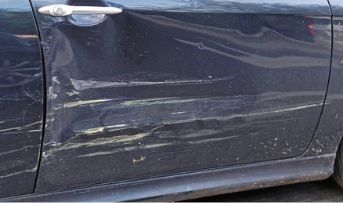General Insurance Blogs, Articles & Updates by - Magma HDI
Have us call you
- RENEW YOUR POLICY
- BUY NEW POLICY

How is your premium fixed? Here’s how actuaries do it
For most people, general insurance online quote is the first consideration when buying any insurance. We do a risk-return analysis based on the premium we pay for the policy, whether a one-time or annual payment. We then compare quotes of policies of other insurance companies and choose the one with maximum benefits and minimum premium.
But have you ever wondered how insurance companies calculate your general insurance online quote price and how it is fixed? Let us look at the answer to these questions in detail.
Who fixes your premium?
Actuaries are the guardians of the premium formulation process for any insurance company. It is based on sophisticated planning. They anticipate and develop detailed forecasts, evaluate them, make several assumptions, and fix the premium. It is a complicated process as the future is tough to predict. Also, it is a continuous process as the external environment is dynamic and keeps changing.
We can divide the process of fixing the premiums into four phases.
1. Pricing plan:
The first phase in fixing the premium is to create a pricing plan based on the short-term and long-term goals of the company and its priorities. It will depend upon the target market of the company, its existing competition, and its distribution technique.
The pricing should maximise the profits of the company while being competitive and sustainable at the same time. Actuaries club this information to design various insurance policies and try to fix the premium accordingly.
2. Actuarial assumptions:
Actuaries make several assumptions before testing the premium pricing. This is done by reviewing the dynamic external factors such as the economy, anticipated inflation, anticipated rates of unemployment and business failure, rules and regulations in the concerned market, accounting and taxation requirements, existing competition, customer tastes, preferences, etc.
The company prepares a pricing strategy based on risk, expected business volume, and capital availability. They also finalise product characteristics based on age groups, female premium procedures, etc. Actuaries then review their assumptions according to their recent market experience, investment earnings rate experience, new money rates by business category, etc.
3. Finalising policies and premium:
Actuaries use their professional judgement to determine the premium for any specific policy. By performing pricing studies, they arrive at the premium amount and dividends that meet the company's objectives. They ensure the various insurance plans are consistent with specific age groups, occupational classes, etc. Actuaries also design supplementary benefits with any plan and the riders that come along with it.
4. Managing the results:
For the final phase in general insurance online quote, they estimate the losses the insurance company may face in the coming year. This can be predicted by making use of historical data. They then establish benchmark rates for various policies that ensure that the insurance company will meet any insurance claim that arises in the future.
Actuaries apply statistical methods and the abovementioned considerations and calculate the premiums for client groups with similar predictive risk attributes. They also assess the insurance company's ability to pay off its claims by studying past data and forecasting the possible financial impact of any catastrophe that may occur in the future.
Fixing the premiums for an insurance policy is a complex process that actuaries perform. If you are a business looking for an insurance policy, you should inform your insurer about the steps you have taken or intend to take to minimise your business risks. This can help to lower your insurance premium.
When purchasing a non-term insurance policy, one must identify the best general insurance online quote by comparing the premium of similar other policies. Choose the policy that provides maximum or reasonable coverage at the minimum premium rates and stay protected.
Click HERE to know more about general insurance online quote.
Disclaimer: The information provided above is for illustrative purposes only. To get more details, please refer to policy wordings and prospectus before purchasing a policy.

Navigate roundabouts like a pro with our simplified guide
Have you already purchased car insurance India for your new car as a mandatory feature but still fear taking your vehicle on a spin? Driving in India often leaves most drivers intimidated. The crowded streets, impatient drivers, and lack of enforcement of traffic laws can make navigating the roads a harrowing experience. One of the most confusing elements of Indian roads is the roundabout.
Roundabouts, also known as traffic circles or rotaries, are circular intersections designed to help traffic flow more smoothly. However, they can be daunting if you need to become more familiar with them. But fret not! This blog post will provide a simplified guide to navigating roundabouts like a pro and help you stay safe.
What is a roundabout?
Before we dive into how to navigate roundabouts, let us first understand what they are. In a roundabout, traffic circulates counter-clockwise around a central island in a circular intersection. Drivers entering the roundabout must give way to vehicles already in the circle and continue driving counter-clockwise until they reach their desired exit.
Why are roundabouts safer?
Roundabouts have become increasingly customary because they are safer than traditional intersections. The Insurance Institute for Highway Safety conducted a study that shows how roundabouts decrease the number of severe crashes by 78% and fatalities by 82% compared to traditional crossroads. Roundabouts eliminate many conflict points in traditional intersections, such as head-on collisions and right-angle crashes.
How to navigate a roundabout?
1. Approach with caution:
The first step to navigating a roundabout is to approach it with caution. Slow down as you approach the roundabout, and be prepared to stop if necessary. Look for signs and markings on the road to help guide you through the roundabout.
2. Yield to traffic already in the circle:
Once you have reached the roundabout, you must yield to traffic in the circle. It means you must wait until there is a gap in traffic before entering the roundabout.
3. Choose your lane:
Before entering the roundabout, you must choose the appropriate lane. If you are turning right, stay in the right lane. If you are going straight or turning left, use the left lane. If multiple lanes exist, choose the one that will take you to your desired exit.
4. Maintain a slower speed:
Once you have entered the roundabout, maintain a slower speed of around 10 km an hour. Do not stop or change lanes in the roundabout.
5. Use your turn signals:
If you are turning, use your turn signals to indicate your intentions. Don't make rash turns without giving proper signals. You may end up crashing your car in an accident. Make the best use of your car's rear-view and side-view mirrors to get a clear judgement of the traffic behind you while making a turn.
6. Exit the roundabout:
As you approach your exit, use your turn signals to indicate your intention to exit. Yield to any pedestrians or bicyclists in the crosswalk and exit the roundabout safely.
Roundabouts can be intimidating, but they are a safer and more efficient way to manage traffic. By following the above tips, you can navigate roundabouts like a pro and reduce your chances of getting into an accident.
Remember to maintain a cautious approach, pay attention to traffic already in the circle, and use indicators while maintaining your speed and staying in your lane. It is that simple! While the regulatory body mandates it, we recommend purchasing car insurance India to protect yourself from the financial damages you may incur in an accident. With these tips in mind, you can stay safe on the road and drive with confidence.
Click HERE to buy the best car insurance India policy.
Disclaimer: The information provided above is for illustrative purposes only. To get more details, please refer to policy wordings and prospectus before purchasing a policy.

Poor driving posture is a compounding problem that you must rectify at the earliest
Poor posture is the new smoking. It affects almost everyone around the globe, but it is not nearly talked about as much as it should be. With rigorous commute time, there’s no doubt that the disastrous effects of poor posture while driving or travelling affect most people.
Bad posture can make a short ride uncomfortable and causes much more than a stiff neck in the long run. After years of this compounding problem, pressure on the spine results in slowly curving the spine, leading to Kyphosis. Kyphosis has many associated problems other than just aesthetic deformity. It leads to reduced shock absorption and imbalance and unyielding chronic pain. This makes you more prone to injuries and can put your life at risk.
Other factors, such as reduced metabolism leading to worse digestion and an increased risk of cardiovascular disease, are matters of great concern. However, the good news is that poor driving posture gravely affects people only after an extended period, and you can fix it. The way we drive has a significant impact on our health and our car’s safety. Therefore, we recommend you buy car insurance online and health insurance to protect yourself and your vehicle from the financial strain of accidents and poor posture.
Additionally, read on to learn some tips to rectify poor driving posture.
How to rectify poor posture in a car?
It is tough to avoid poor posture in a car since they are usually cramped and made to provide temporary comfort but long-term damage. Lower and laid-back seats, along with tipped-back headrests, cause your hamstrings and neck muscles to get pulled and, as a result, cause pain.
Here are some things you can do to improve your driving posture.
1. Adjust your seat:
Most drivers make the seat low, which leaves their back unsupported and barely supports the thighs. Raising the seat higher will solve most of these problems and improve road visibility and prevent accidents. It will support your pelvis and thighs and put you in a neutral position to avoid slouching. Additionally, while sitting in a car seat, your tailbone should be propped up to the back of the seat, and you should rest against it to provide rest to your joints and muscles.
2. Stretch at regular intervals:
This tip is helpful during long road trips or if you regularly drive for long hours. Gently roll your shoulders, and stretch your arms and legs at stoplights to avoid them from going stiff due to gripping the steering wheel for too long. While stopping at rest stations, walk around, stretch, and get your body moving for the drive ahead.
3. Position your mirrors correctly:
Your rear and side-view mirrors should be adjusted appropriately to avoid additional strain on the neck. You should be able to see all the mirrors without changing your body’s position excessively.
4. Steer clear of keeping your arms above shoulder level:
This will prevent the build-up of strain on the arms and neck and relieve the pain you could get from your wrists and elbows.
5. Adjust your headrest:
Your headrest should touch the back of your head, such that the top of the headrest lies between the top of your ears and your head. This will prevent neck injuries in the case of collisions and give your head the perfect balance it needs while driving.
Proper positioning of the driver’s seat is necessary for visibility and safety. Additionally, it is also beneficial for the driver’s spinal health. It is a critical factor that all drivers should consider for a safe car ride and avoid health adversities due to bad posture. One must also choose to buy car insurance online that fits your needs perfectly and provides comprehensive coverage to prevent the financial costs due to vehicle accidents.
Click HERE to buy car insurance online.
Disclaimer: The information provided above is for illustrative purposes only. To get more details, please refer to policy wordings and prospectus before purchasing a policy.

What is a balanced diet, and how can you achieve it
In a rapidly progressing world, it is paramount to stay fit and healthy. A balanced diet is extremely important to remain energetic, rejuvenated, and fresh throughout the day. It keeps your health in check. A nutritious and balanced diet, along with physical exercise, is enough to boost your physical health.
The presence of good physical health helps you in leading a stable life. It keeps you away from illnesses like diabetes, blood pressure, PCOD, PCOS, thyroid, heart disease, and mental problems like anxiety and depression. Hence, it is a known fact that a balanced diet is essential for your health and there is no replacement for that.
Regardless of everything, you must have health insurance to keep you covered against any medical emergency. You can search for online health insurance to explore different options and choose a policy that accurately fits your requirements.
Why is a balanced diet necessary?
Your body needs a balanced diet to function to its best capacity. Without a balanced diet, your body may become dysfunctional and invite problems like fatigue, infections, illnesses, etc.
A balanced diet is also necessary for children in their growing years. The foundation of a healthy life starts in childhood. And bad eating habits in childhood can be transferred to adulthood as well.
Most diseases are linked to a poor diet globally, and obesity is one such complex concern that can give rise to far more intense illnesses. A poor diet can lead to diabetes, heart disease, stroke, cancer, thyroid, and so on.
These are a few nutrients that can help you achieve a balanced diet:
● Minerals
● Vitamins
● Antioxidants
● Proteins
● Carbohydrates
● Healthy Fats
● Fibre
But which food items can help you replenish these nutrients?
For a balanced diet, you will need the following:
● Fruits
● Vegetables
● Legumes
● Nuts
● Grains
What are the foods to avoid?
Apart from the food items you should include, there are a few that you should discard. These are:
● Alcohol
● Trans Fat
● Processed food
● Too much red meat
● Refined sugar
● Canned food
● Overcooked food
● Refined grains
Let's understand in detail the dietary benefits of the food items that can maintain the balance in your health.
1. A bowl of happiness with fruits:
Fruits can be added to desserts or consumed as fresh juices. Although they contain sugars, it is not refined. They contain electrolytes and antioxidants, which are necessary for good health. One bowl of fruits daily corresponds to a bowl of happiness and health. However, health experts advise consuming fruits in their natural state rather than packaged drinks.
2. Veggies are must:
Green and leafy vegetables are rich in antioxidants, minerals, and vitamins. To add to your balanced diet, you should add all types of vegetables. You can use them in salads, side dishes, soups, curries, etc.
3. Don’t miss out on the proteins:
Proteins are an integral part of the diet. Protein can be both plant-based and animal-based. Animal protein consists of red meat, chicken, mutton, and fish. You should always opt for fresh, unprocessed meat.
Plant protein consists of nuts, beans, almonds, peas, lentils, walnuts, and so on. If you're a vegan, these are some fantastic alternatives to meat. Protein is necessary for building muscle mass and fueling your body with energy to work the entire day.
It is important to always focus on staying healthy. And the first step towards staying healthy requires a balanced diet. It will keep you energetic and fit at all times. Moreover, you should always have a backup if things go wrong because we know health relies on several other factors, including heredity, age, hormones, and more. It is better to make provisions in advance and invest in insuring your well-being with online health insurance.
Click HERE to buy online health insurance.
Disclaimer: The information provided above is for illustrative purposes only. To get more details, please refer to policy wordings and prospectus before purchasing a policy.

Wonder why two-wheelers are petrol-fuelled
With private modes of transport becoming more popular, the number of vehicles on the roads and policyholders of car and 2 wheeler insurance is only increasing daily. While the automotive industry welcomes the increased demand, it is an exciting prospect for industry watchers. As consumer preferences shift towards more sustainable alternatives across all purchases without a massive increase in budgets, alternative fuel offerings have emerged in recent years.
Why are petrol two-wheelers with a spark-ignition internal combustion engine still seeing steady demand despite the trend? Read on to know why petrol continues to be the most preferred fuel for two-wheelers.
Petrol engine:
A petrol engine is an internal combustion device designed to transform thermal energy into mechanical energy by the spark ignition of gasoline.
The benefits of gasoline engines:
● The power output is excellent
● The cost of buying a gasoline engine is lower than a diesel engine
● Petrol engines burn gasoline more sustainably than diesel engines and have a better price-to-power ratio
● Petrol engines are quieter and vibration-free
● Petrol engines cost less to service and maintain
● Naturally, petrol engines gain from being simpler to adjust and tune up
● They are light and effortless to operate
● Despite being flammable and explosive, it is simple and safe to store the gasoline
● Almost no other source of energy has a higher energy density than gasoline
Reasons for not using diesel engines in two-wheelers:
● Comparing the two engines, the carbon-dioxide output from the diesel engine is roughly 13% more per 3.8 litres. As a result, it pollutes more than a petrol engine and is unhealthy for the environment.
● Fuel pumps, glow plugs, and other components are necessary for diesel engines, and their combined cost will raise the bike's overall price.
● Diesel engines have lower RPM than gasoline engines but provide higher torque. Therefore, it is not appropriate for motorcycles where we require great speed.
● Because diesel engine combustion occurs due to auto detonation, diesel engines vibrate more than gasoline engines.
● A diesel engine is heavier than a gasoline engine and cannot be used in a motorcycle or other small vehicle.
● The engine block must be more vital to resist more excellent compression ratios because they result in higher pressure applied to the cylinder. This makes the cost of diesel engines higher than that of gasoline engines.
● Diesel engines use fuel injector technology, which is more expensive than the spark plug technology used in gasoline engines, to pump fuel into the combustion chamber.
Petrol engines are used in two-wheelers because they are slick, lighter, quieter, better at picking up, and require less maintenance, among other reasons. Petrol is significantly easier to ignite than other fuels and burns more efficiently. Gas engines are lighter, stronger, and more responsive than diesel engines. Diesel engines often have a slower throttle response than gasoline engines, which makes them less ideal for bikes.
While petrol may be a better alternative than diesel, it is essential to consider its hazardous nature and use it accordingly. Practice recommended fuel-filling habits that preserve the longevity of your engine and purchase comprehensive 2 wheeler insurance to protect your bike from any contingencies.
Click HERE to buy 2 wheeler insurance for your motorcycle.
Disclaimer: The information provided above is for illustrative purposes only. To get more details, please refer to policy wordings and prospectus before purchasing a policy.

These signs in the morning can indicate that you might be at risk of getting diabetes
Health is an underappreciated asset we tend to overlook when pursuing our goals. What we fail to recognise is that restoring one’s health is not an easy or inexpensive process. Early risk assessment and purchasing the best health insurance in India are effective methods to minimise the risk and protect yourself from illness and medical costs.
Despite all the medical advancements modern science has made, it is inevitable to eliminate the risk of diseases such as diabetes. According to the WHO, 77 million adults in India have diabetes, while 25 million are pre-diabetics. Also known as a silent killer, the disease has multiple symptoms you can recognise early to prevent the problem from accelerating.
Read on to learn about the disease and some common symptoms in the early morning that may indicate your susceptibility to diabetes.
Let’s get to the roots first and understand what diabetes is.
Diabetes is a chronic illness due to the insufficient production or ineffective use of insulin produced by the pancreas. Insulin is a blood sugar-regulating hormone, which, when imbalanced, affects the utilisation of glucose by the body. The multiple types of diabetes include Type 1, Type 2, and gestational diabetes, which are caused due to varied reasons and show varying symptoms. Irrespective of the type, diabetes results in high blood sugar, further causing ill-functioning of the heart, kidneys, vision, and more.
The severity of the issue.
Type 1 and 2 diabetes are chronic, while prediabetes and gestational diabetes are reversible. If not managed at the earliest, any of these types may result in fatal issues like a heart attack or failure, stroke, kidney failure, and continuing problems like weakened immunity, weakness, and slow recovery from wounds.
Early morning symptoms of diabetes.
Be watchful of these early morning symptoms of diabetes, which also can be associated with several other diseases. Suppose you experience some of these common symptoms of diabetes early in the day. In that case, it is recommended to consult a doctor to prevent diabetes. Also, purchase the best health insurance in India or take an add-on diabetes cover.
1. Excessive thirst:
Considered a tell-tale sign, waking up with a dry mouth and throat may require an urgent diagnosis. If you wake up thirsty continuously, checking your blood sugar right after waking up may help confirm the problem. Irrespective of the results, ensure that you visit a doctor for consultation.
2. Waking up with a full bladder:
In combination with the above symptom, excessive urination is a giveaway sign of diabetes if noticed frequently throughout the night. This occurs due to the slowdown of the kidneys, which causes the unusually high glucose to be excreted into the urine with tissue fluids, which leads to dehydration, excess thirst, and frequent urination.
3. Disorientedness:
While waking up frazzled seems familiar, coupled with the other symptoms on the list may indicate a more significant problem. If you are nauseous and dizzy immediately after waking up, it is best to consult a doctor.
4. Blurred vision:
Diabetes is known to cause enlargement of the eye lens over adaptable levels, which causes hazy vision. This occurs due to a sudden change in your blood sugar levels, making it crucial to manage and stabilise your blood glucose levels at all times to prevent permanent damage.
5. Numb limbs:
If the extremities of your hands or legs feel numb immediately after waking up and need some warming up before they stop tingling, it may result from damaged nerves due to high blood glucose.
These were a few evident signs that can help you understand if you’re at risk of diabetes and counter it at an early stage. Maintaining one’s health is a priority since you cannot eliminate the risk of diseases like diabetes, making it prudent to purchase the best health insurance in India to cover the financial burden of medical bills and keep the financial stress away.
Click HERE to buy the best health insurance in India.
Disclaimer: The information provided above is for illustrative purposes only. To get more details, please refer to policy wordings and prospectus before purchasing a policy.

Here’s how you can protect your car doors from dents and scratches
The thought of getting a dent on your car doors while driving, parking, or simply due to external variables is upsetting. While door dings may not be expensive to repair, they diminish the car's value and make it an additional ordeal. Car Insurance renewal or purchase is the best way to protect yourself from the financial burden of repairs.
As preventive measures, here are some straightforward ways to avoid scratches on your car doors.
1. Test your defensive driving skills:
Along with following the fundamental traffic laws like wearing your seatbelt and obeying the speed limit, defensive driving also includes practical abilities like anticipating potential errors other drivers may make. You can reduce the possibility of car damage by maintaining a safe and appropriate distance from other nearby vehicles.
2. Install door edge guards:
Door edge protectors help to cushion your door from dents and scratches. You can DIY or get it installed by a local car accessories shop. They are available in adhesive and cling door variants and do not harm your car's paint when removed.
3. Pick your parking spots wisely:
Consider parking your car in a garage rather than on the curb or select a quieter location on the lot. Also, use a different mode of transportation while visiting crowded places like open markets to protect your car doors from scratches.
4. Door sill protectors:
The door sill area is vulnerable to wear and scratching because of constant contact. Door sill protectors almost eradicate this issue. The practical device is easy to install and cheap, making it the perfect preventive measure.
5. Regularly wash your car using the correct techniques:
Most minor dings and dents aren't due to collisions or bumps but usually happen while cleaning due to abrasive brushes used in automatic car washes that can easily scratch your paint. Consider going the manual route and ensure to rinse the dust and grime off before getting to work.
6. Avoid unnecessary contact:
Do not lean or sit on your car, put anything on it, or touch the painted surfaces excessively to prevent door scratches. Although it may seem unlikely, opening and closing the doors without using the handles could even cause scratches.
Using car covers is another habit you should break to avoid car dings. In addition to providing no defence against potential road scratches, they could do more harm than good. Along with probable paint damage from wind flaps, a similar outcome will also be anticipated each time you cover and uncover the car.
Although nobody wants their car's doors to get scratched, it occurs frequently. It looks terrible and can cause rust where the paint has chipped off. You may take preventative measures and exercise caution when handling your automobile doors to keep this from happening and the pricey paint repair. Car insurance renewal can help you avoid bearing the costs of the painting job in case the dents and scratches result from accidents. However, in all other cases, you will have to pay the expenses yourself, which is why you must practise preventive measures to maintain your car’s doors perfectly.
Click HERE to get car insurance renewal done.
Disclaimer: The information provided above is for illustrative purposes only. To get more details, please refer to policy wordings and prospectus before purchasing a policy.

These exciting ideas can increase the longevity of your car
Buying a car is an exciting process that takes lots of planning, budgeting, and sacrifices to finally achieve your goal of owning a vehicle. Especially amid economic uncertainties, it becomes essential to maintain these high-value purchases to minimise the effect of depreciation.
While insuring your vehicle with the best car insurance India policy is one way, taking effective care is another to minimise wear and tear and keep your car in its best shape. This ensures its longevity and also yields a greater resale value for you.
Apart from regular maintenance, keep these lesser-talked-about tips in mind to increase your car's lifespan!
1. Inspect your engine light:
The engine is the heart of your car. The vehicle’s check engine light indicates potential problems that may require urgent inspection. Often, drivers do not heed the indication and allow the issue to persist for a while before they notice it and get it checked, by which the problem has already escalated.
2. Protect your car from the sun:
Just as harsh sun rays damage humans, cars that stay in direct sunlight are likely to suffer damage to the paint and interiors, resulting in increased maintenance costs in the long run. Ideally, park your car in a garage or shade. In case not possible, invest in a quality sun cover and interior shades that keep the cabin cool.
3. Organise your trips effectively:
This may come as a bummer for driving enthusiasts, but instead of multiple short trips for your daily errands, club your tasks together to reduce the wear of your engine.
4. Ensure you break-in properly:
After buying your new car, ensure you break in as per the manufacturer's guidelines in the manual. Generally, it is recommended to keep your speed under 80 kmph for the first 1600 km without excessive load.
5. Keep your car clean:
It may seem like a hassle to focus on keeping your car clean at all times, but we often underestimate the damage accumulated dirt, road tar, and rust can do to your vehicle's appearance. A quick cleanup once or twice a week with a car cover to protect it when parked can go a long way in maintaining your car after regular waxing and cleaning services.
6. Keep your keychain bunch light:
It may seem like an unrelated tip, but it is best to avoid linking other keys and accessories to your car key. A heavy bunch in the ignition will likely bounce around while the vehicle is in motion. The weight and movement together can wear out the ignition ridges and lead to ignition switch failure.
7. Choose a comprehensive insurance:
While buying car insurance India, make sure to check the features and ensure that the exclusions are minimal. It is ideal to purchase an add-on feature that covers any exclusions to provide complete coverage for any damages that may occur.
8. Prepare appropriately for long-term storage:
If you do not continuously use your car for more than a month, leaving it in the parking may not be the best option. Fill up fuel and consider adding a stabiliser after consulting an expert. Ensure to disconnect and remove the battery when discontinuing use for long periods to prevent draining.
Good maintenance is key to increasing the longevity of your car. By following appropriate driving guidelines and the manufacturer's instructions with regular servicing supplemented by purchasing comprehensive car insurance India, you can ensure that your vehicle stays in its best form for long periods!
Click HERE to buy a reliable car insurance India policy.
Disclaimer: The information provided above is for illustrative purposes only. To get more details, please refer to policy wordings and prospectus before purchasing a policy.


